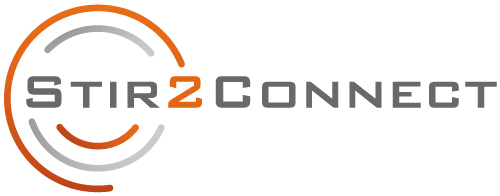The RSV-Technology briefly explained:
Patented welding process for the production of joints between cable/litz wires and connection elements
Cable-/litz wires cross-sections from 1 mm² can be manufactured; there are almost no technical limits upwards.
The RSV-Technology is based on the principle of friction stir spot welding.
During the welding process the melting temperatures of the joining materials are not reached.
RSV was developed for the processing of soft metals, especially for materials which are relevant in areas of electrotechnical significance. These materials are copper and aluminum as well as coating materials such as nickel, tin, silver and different engineering plastics.
The necessary heat of the welding process occurs through the mechanical friction between the rotating welding tool and the joining partners.

The RSV-Technology briefly explained:
Patented welding process for the production of joints between cable/litz wires and connection elements
Cable-/litz wires cross-sections from 1 mm² can be manufactured; there are almost no technical limits upwards.
The RSV-Technology is based on the principle of friction stir spot welding.
During the welding process the melting temperatures of the joining materials are not reached.
RSV was developed for the processing of soft metals, especially for materials which are relevant in areas of electrotechnical significance. These materials are copper and aluminum as well as coating materials such as nickel, tin, silver and different engineering plastics.
The necessary heat of the welding process occurs through the mechanical friction between the rotating welding tool and the joining partners.

Advantages towards other joining techniques:
Advantages towards other joining techniques:
- A pre-treatment of work pieces is not necessary. Additional joining parts and materials such as support sleeves, solder, fluxes are not required.
- Dissimilar joints, for example made of aluminum and copper, can also be manufactured by RSV with a high process reliability and without the formation of critical, brittle intermediate layers in the joining zone.
- short process and set-up times as well as a small installation space of the RSV-parts
- high degree of automation
- minimal solid, liquid and gaseous pollutant emissions
- optimal output, minimal error rate
Application
Application
In electrical engineering, the increasing use of wire material poses manufacturing challenges when producing electrical contacts between one or more stranded conductors and a connection element (e.g. cable lug).
Some of the challenging wire materials are aluminum litz wires and coat-insulated fine-wire copper strands (high-frequency).The RSV-Technology creates new manufacturing opportunities and works without additional auxiliary joining materials. Furthermore, conventional connection elements such as cable lugs for crimping can be used for the welding process.
Climate protection and resource conservation
Climate protection and resource conservation
The RSV-Technology contributes to the energy transition and the associated reduction in the greenhouse gas CO2. It can be used to directly implement measures to reduce electrical power losses and to increase efficiency and resource conservation in production and in the operation of electrical and electronic end products.
Short production times and a significantly lower use of materials and energy compared to conventional joining techniques increase efficiency and resource conservation in production.
The RSV-welding contact
The RSV-welding contact
The RSV-welding contact is characterized by a fully compacted structure in the welding zone.
Mechanical and electrical properties are of high quality.


Insulating oxide layers (e.g. Al2O3) or also insulating lacquer layers on the individual wires are safely broken open for safe contact requirements.
All individual strands of a stranded wire are captured by the welding process and bonded together. This results in the best possible utilisation of the electrically conductive cross-section.
A simple visual inspection of the welding area already provides essential information for quality assurance.

The RSV-welding contact is characterized by a fully compacted structure in the welding zone.
Mechanical and electrical properties are of high quality.


Insulating oxide layers (e.g. Al2O3) or also insulating lacquer layers on the individual wires are safely broken open for safe contact requirements.
All individual strands of a stranded wire are captured by the welding process and bonded together. This results in the best possible utilisation of the electrically conductive cross-section.
A simple visual inspection of the welding area already provides essential information for quality assurance.

Systems engineering
The modular designed RSV machine technology has an integrated position and force control system. It is operated via a HMI touch panel.
The machine components such as the friction welding spindle, clamping system, safety housing etc. can be individually configured with regard to the respective application conditions and needs of the user.
As a know-how carrier we support you with the procurement of the system technology.


